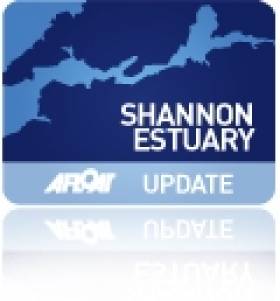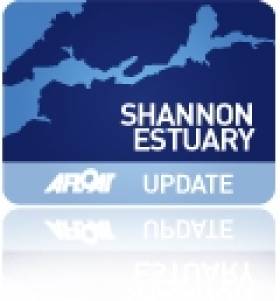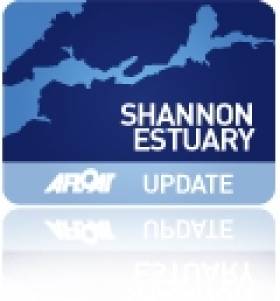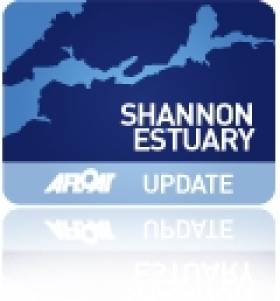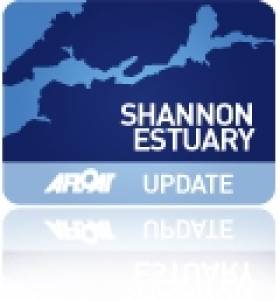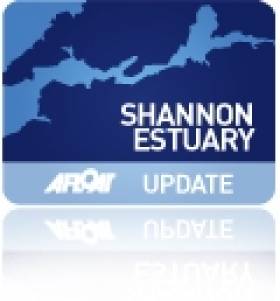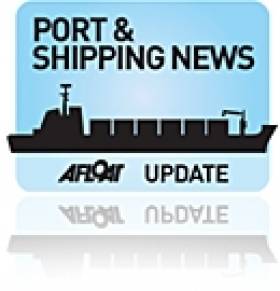Displaying items by tag: SFPC
SFPC Welcomes 'Game-Changing' New Foynes Port-Limerick Road Scheme
#FoynesPort – Shannon Foynes Port Company CEO Pat Keating has described the procurement of engineering consultancy services for the Foynes to Limerick Road Improvement Scheme as a hugely significant moment in realising the enormous investment and employment potential of the estuary.
The scheme will provide a high quality road to connect the Port of Foynes with the M7/N18 at Limerick. The N69 National Secondary Road currently connects Foynes to Limerick along 32km of single carriageway.
Welcoming the announcement by Limerick City and County Council, Mr Keating said that the development of the high-quality road between Foynes and Limerick would be a 'game-changing' moment for the port company.
"This commitment is one of the most important developments in the history of Shannon Foynes Port Company. Its benefits will be felt not just by the Port Company but by the wider region as this road is a central piece to facilitate our plans for very significant economic growth along the Shannon Estuary.
"We are planning to double tonnage at our ports and anticipate significant job creation on the estuary over the next 30 years. We have signaled that two key pieces of infrastructure are critical for this to happen.
One is the regeneration of the rail link to Foynes, which we are actively seeking to advance, and the other is the development of a quality road link to Limerick.
"The road link is an absolutely essential piece for us. We have a huge opportunity to attract investment and industry over the coming decades thanks to the advantage that the estuary's unique deep-water gives us. But we will not be able to deliver on these plans unless there is a quality transport network.
"Heavy goods traffic alone could increase by as much as 350% over the life time of our Vision 2041 Masterplan. The N69 is inadequate as things stand, let alone with a tripling of heavy goods traffic. The development of this high quality road to connect Foynes with Limerick is, therefore, essential. Otherwise growth will be seriously constrained and opportunities will be lost."
Mr Keating said that the announcement is a definite show of commitment to the project by the Department of Transport, the NRA, the Mid West National Roads Design Office and the local authority.
"We cited the importance of this road link when we launched Vision 2041 and to have such a prompt commitment is very encouraging. We look forward now to the selection of a preferred route in 2014, followed by the public consultation process and then on to the actual delivery of the new road."
#ShannonEXERCISE- A two-day exercise held on the Shannon Estuary last week was a first in Europe, in that it involved testing Smartly Remotely Operated Submarines and Unmanned Aerial Vehicles.
The exercise replicating the scenario of a 43,000 tonne container ship 'Marée Noire' suffering hull damage when impacting with rock entering the Shannon Estuary due to loss of steering and floundering off the coast of Scattery Island.
The estuary off Co. Clare has become a key European test site for a range of highly advanced 'smart technologies' Marine Robots and Unmanned Aerial Vehicles.
The University of Limerick is leading the integration and deployment of the underwater and aerial technologies, within this exercise as part of a European Research Collaboration NETMAR which has Irish, UK, French, Spanish and Portuguese partners.
The exercise is a first in terms of scale and use of robotic platforms as part of Ireland's largest marine emergency response exercise to deal with a major environmental disaster.
London 2012 Weighs Anchor off World Famous Golf Course
#OLYMPIC SHIP - A 82,562 dwt dry bulk-carrier, London 2012, weighed anchor today having recently docked at the Aughinish Alumina jetty, on the Shannon Estuary, writes Jehan Ashmore.
The Liberian flagged vessel which has a draft of more than 14m had docked at Aughinish, one of six terminals operated by Shannon Foynes Port Co, near Askeaton, Co. Limerick. The facility is where large sized ships can reach by plying the deep waters of the mid-western waterway that has some 500sq km of navigable estuary.
Following completion of operations of London 2012 at the Aughinish terminal, which is the largest alumina refinery in Europe, the vessel departed the jetty dedicated to importing bauxite to the Russian owned RUSAL plant, and proceeded to anchorage beyond the mouth of the Shannon.
The 229m long X 32m beam vessel had anchored some 3 nautical miles offshore of Ballybunion. The west Kerry venue is another place strongly associated with sport through its world famous golf course, situated on a spectacular stretch of coastline overlooking the Atlantic Ocean.
London 2012 and her sister Beijing 2008, belong to a fleet of approximately 70 vessels, totalling a capacity of 8 million deadweight tons (dwt) and are managed by Tsakos Columbia Shipmanagement (TCM) S.A. of Greece.
The Athens based TCM was only established in July 2010, as a joint venture between Tsakos Shipping and Trading S.A. and Schoeller Holdings Ltd, the owner and operator of Columbia Shipmanagement Ltd.
No doubt her Greek owners will make an opportunity for a vessel to continue in the Olympic spirit by sporting the name Rio de Janeiro 2016. As for golf fans, they too can look forward to the return of the sport in these Games.
Masterplan Sets Out 30 Year Vision for Ports on Shannon Estuary
#SHANNON PORTS- A draft masterplan Vision 2041, to develop port infrastructure and services for the Shannon Estuary over the next three decades, has been published by Shannon Foynes Port Company (SFPC).
The masterplan for Ireland's second largest port which has six terminals along the 500sq km navigable estuary, has specifically targeted growth and expansion options. Also identified are capacity and associated port infrastructure requirements, where SFPC has called for improved road and rail access.
In addition the masterplan is to take into consideration of non-core assets facilities at Foynes Port and Limerick Docks which consists of the single (Ted Russell) Dock basin.
Vision 2041 recognises the strategic need of the estuary to be in position to ensure future capability in handling larger trade volumes efficiently and competitively when the opportunities arise.
The masterplan has concentrated in identifying three key major objectives:
Significant expansion and infrastructural development in the deepwater Port of Foynes
Promoting non-core assets in Limerick Docks for alternative port / non port related activities
Managing the natural attributes of the estuary and its destination as an Ocean Energy Hub
The objectives of Vision 2041 are to realise the economic potential of the natural resource along the Shannon Estuary and developing positive promotion of the ports as a strategic economic driver for the Mid-West Region.
Copies of the SFPC Vision 2014 masterplan can be downloaded from clicking this LINK or alternatively a digital copy can be requested by contacting the Masterplan Team at 069 73100. The deadline for written submissions concerning the draft Masterplan is up to and incl. 1st February, see website for postal address and email details.
Foynes Hosts Emergency Ship Fire Drills
#SHANNON ESTUARY – The Maritime Journal reports that a simulated fire and rescue drill simulating a fire on board a ship took place in Foynes Port this week.
Limerick County Fire & Rescue Service with the assistance of Shannon Foynes Port Company and Celtic Tugs which operates a fleet of tugs in the port hosted the Ship and Ports Course.
A number of exercises were carried out during the course, to read more on the exercise click HERE.
Masterplan for Shannon Foynes Port Company
Port expansion options are to be examined so to prepare ports for larger trade volumes when the opportunities arise. Also under consideration are the non-core assets at the Port of Foynes and Limerick Docks. To read more about the masterplan and the challenges and issues that has been identified in both ports click HERE.
The statutory jurisdiction of the estuary is under the control of SFPC, which is responsible for the estuary that runs from the mouth entrance marked by Kerry and Loop Heads and stretching far inland to Limerick City. The natural waterway can handle vessels of up to 200,000 deadweight tonnes (dwt) which are the largest ships that can dock in Irish waters.
Record Profits for Foynes Port as Tonnage Increases
The boost is revealed in the state-owned company's annual report which shows the facility made a bottom-line profit for the year of €1.1 million – a five-fold increase on 2009. Operating cash flows rose to €3 million, up from €2.7 million a year earlier. To read more click HERE.
Late last month the Co. Limerick port was busy particularly with the seasonal arrival of three cruise ships and all made within one week, for more click HERE. This Friday sees the return of one of those cruise-callers, the French-flagged Le Diamant which is on charter to operator Inter Cruises.


























